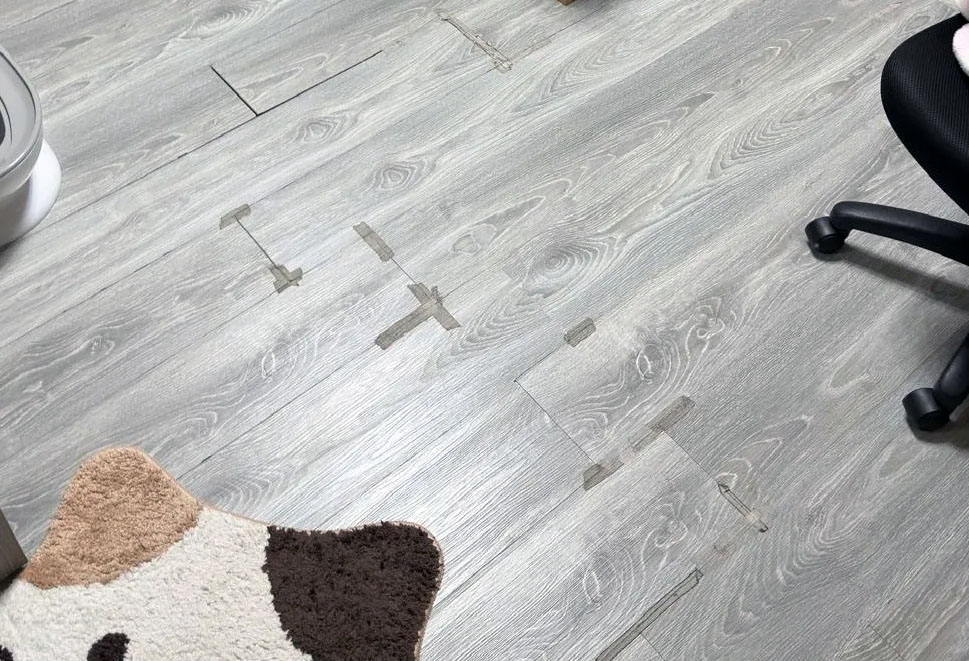Uncategorized
SPC Flooring: Advanced Guide – Raw Materials
Although different manufacturers use roughly the same raw materials to produce SPC (Stone Plastic Composite) flooring, there are significant differences in material purity, formulation ratios, and choice of additives, which in turn affect the overall performance and lifespan of the flooring.

Overview of Raw Materials and Their Primary Functions
| Raw Material | Primary Function | Typical Ratio |
|---|---|---|
| PVC Resin | Binds layers together; provides toughness and chemical resistance | Core layer: approx. 20–30% |
| Calcium Carbonate (CaCO₃) | Adds rigidity and dimensional stability | Core layer: approx. 60–70% |
| Stabilizers (Ca-Zn type) | Prevents PVC degradation; improves heat resistance and aging resistance | Less than 5% |
| Plasticizers (DINP/DOP) | Enhances flexibility; improves impact absorption | Adjusted per formulation |
| Foaming or Anti-Tear Additives | Modifies density; boosts bending and impact strength | Trace amounts |
| UV/Wear Layer Resin | Strengthens surface scratch resistance and UV protection | Wear layer thickness: 0.3–0.7 mm |
Each raw material must undergo precise mixing and extrusion processes to ensure the homogeneity and consistent performance of the finished flooring product.
Impact of Raw Material Quality on SPC Flooring Performance
- High-Purity PVC Resin
Using 100% virgin PVC ensures low VOC emissions and strong chemical stability, significantly reducing the risk of toxic gas release during combustion - Calcium Carbonate Particle Size
Micron-grade, high-purity CaCO₃ enhances the density and compressive strength of the core layer. In contrast, low-quality coarse particles can lead to structural defects and stress concentration. - Choice of Stabilizers
Calcium-zinc stabilizers are more environmentally friendly and free from heavy metals. Using inappropriate metal stabilizers may cause premature aging and yellowing of the flooring - Type of Plasticizer
High-quality, eco-friendly plasticizers like DINP are safe for human health. Lower-grade materials may use DOP, which can release phthalates over time and negatively impact indoor air quality. - Additive Formulation
A well-balanced mix of foaming agents and auxiliary additives ensures both rigidity and flexibility. Poor formulations may result in brittle boards or bubbling issues.
| Material Component | High-End SPC Flooring | Low-End SPC Flooring |
|---|---|---|
| PVC Resin | Uses SG-5 ethylene-based PVC; high strength and excellent environmental performance | Uses recycled PVC, which may contain impurities and harmful substances |
| Calcium Carbonate Powder | Fineness reaches 400–800 mesh; improves density and dimensional stability | Coarse CaCO₃ particles; negatively affects processing and product strength |
| Lubricants | Precisely balanced ratio of PE wax and internal/external lubricants for stable processing | Imbalanced lubricant ratio; may cause brittleness or shrinkage in the final product |
| Processing Aids | Includes ACR additives to enhance plasticization and melt strength | Insufficient additives; incomplete plasticization affects locking system and durability |
| Anti-Shrink Agents | Compresses gaps between PVC particles to reduce thermal expansion and contraction | No anti-shrink treatment; prone to deformation |
| Underlayment Material | Uses high-density IXPE/IXPP for superior sound insulation and comfort | Uses low-density foam or no underlayment; poor foot feel and weak sound insulation |
Performance Differences & Potential Drawbacks of SPC Flooring by Material Grade
| Material Quality Grade | Typical Characteristics | Possible Advantages | Potential Drawbacks |
|---|---|---|---|
| High-End Materials | Low VOC emissions, dense core, wear-resistant, waterproof, stain-resistant | Long-term stability, smooth surface, impact-resistant | Higher cost |
| Mid-Range Materials | Stable quality, moderate wear resistance, average waterproofing | Good value for money, suitable for most home environments | Gradual yellowing over time, requires precise leveling during installation |
| Low-End Materials | High impurity content, coarse particles, poor aging resistance | Very low price | Prone to warping, increased gaps, mold growth, high VOC emissions |
Conclusion & Buying Recommendation
| Usage Scenario | Recommended Flooring Type |
|---|---|
| High-traffic commercial spaces | High-end SPC flooring |
| Premium residential homes | High-end SPC flooring |
| Rental properties or short-term use | Low-end SPC flooring (with caution) |
| Budget-constrained environments | Low-end SPC flooring (quality matters) |
Although high-end SPC flooring is more expensive, it excels in durability, environmental friendliness, comfort, and aesthetics—making it ideal for long-term use and premium spaces. In contrast, low-end SPC flooring may be suitable for budget-conscious or short-term users, but attention should be paid to potential quality and health risks.
When selecting SPC flooring, consumers are advised to consider not just the price, but also the raw material composition, certification standards, and actual usage needs to ensure the flooring’s safety and durability.

